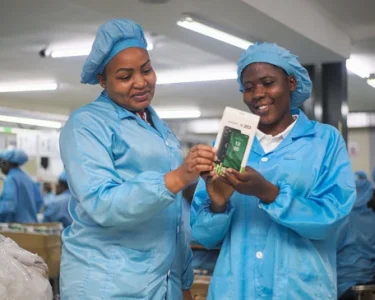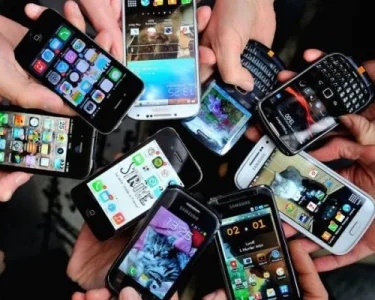Global smartphones shipments declined 2.3% year over year in the second quarter of 2019 (2Q19) for the strongest quarterly performance since 2Q18.
According to preliminary data from the International Data Corporation (IDC) Global Quarterly Mobile Phone Tracker, smartphone vendors shipped a total of 333.2 million phones in 2Q19, which was up 6.5% over the previous quarter.
Challenges were seen across many markets with China and the United States experiencing the sharpest quarterly declines. However, the declines in China during the first half of 2019 have been less severe than the second half of 2018, suggesting some recovery is underway in the world’s largest single market.
Asia/Pacific (excluding Japan and China) continued the strong momentum from 2018 with shipments up more than 3% in the quarter fueled by growth across India and many Southeast Asia markets.
“Despite a lot of uncertainty surrounding Huawei the company managed to hold its position at number two in terms of market share,” said Ryan Reith, program vice president with IDC’s Worldwide Mobile Device Trackers.
“When you look at the top of the market – Samsung, Huawei, and Apple – each vendor lost a bit of share from last quarter, and when you look down the list the next three – Xiaomi, OPPO, and vivo – all gained. Part of this is related to the timing of product launches, but it is hard not to assume this trend could continue.”
The vendor landscape at the top of the market continues to get stronger while the struggles for local OEMs and old school industry names got worse. In 2Q19, the top 5 vendors accounted for 69% of the total market volume, and the top 10 vendors accounted for 87%.
This trend is making the vendor playing field for smartphones look more and more like the PC market. With 5G beginning to unfold in many markets around the world, the challenges are sure to increase for any vendors without strong consumer mindshare.
“Although the overall market remains in decline, the performance in the second quarter indicates that demand is starting to pick up as the market begins to stabilize again,” said Anthony Scarsella, research manager with IDC’s Worldwide Quarterly Mobile Phone Tracker.
“A key driver in the second quarter was the availability of vastly improved mid-tier devices that offer premium designs and features while significantly undercutting the ultra-high-end in price. Combine this with intensified and generous trade-in programs across major markets and channels and upgrading now makes more sense to consumers.”
Samsung maintained the top position in the market for 2Q19 and returned to annual growth of 5.5% with a total of 75.5 million smartphones shipped. As noted in its recent earnings call, the company struggled to sell flagship devices as many consumers are holding onto devices longer than ever and opting for a less expensive replacement option.

The pending announcement of the next Galaxy Note device likely held off some of those that are loyal to the brand. Meanwhile, Samsung’s A-series devices did well in the quarter, particularly the A50 and A70.
Huawei saw its shipment volumes decline 0.6% when compared to 1Q19, which could be regarded as better than expected given U.S.-China trade tensions. Shipment volumes in China hit an all-time high and accounted for 62% of Huawei’s 2Q19 total with 36.4 million units.
The China success during the quarter was in part due to actions taken following the U.S trade ban as Huawei relocated significant human resources back to China with a focus on distribution channel management in the Chinese lower-tier cities. The P30 and P30 Pro, which launched in mid-April, also had a relatively good reception as its predecessor, P20 series, had created a positive ripple effect.

Apple shipped 33.8 million new iPhones during 2Q19, which was down significantly from the same quarter a year ago. However, when factoring in the success of the iPhone upgrade program as well as Apple’s ability to sell more refurbished iPhones through its channels, the argument can easily be made that its position in the market is still dominant.
Regardless of slightly lower market share and device selling prices, as pointed out in yesterday’s earnings call, the iPhone installed base continues to grow. So irrespective of the hardware – as a new iPhone, an older model, or a refurbished product – the expansion of iOS users is what appears to matter most going forward.
Xiaomi experienced a small year-over-year decline during the quarter with a total of 32.3 million smartphones shipped. Xiaomi is still facing challenges in returning to positive year-over-year growth in China in part due to increased competition from Huawei.
In India, the success story for Xiaomi continues as it has been able to maintain its momentum due to its focus on both offline and online channels. It continues to expand its offline network and aims to have 10,000 retail stores by the end of 2019.
OPPO performed well in China and India, which together accounted for nearly three-quarters of its shipments in 2Q19. India remains an important market for OPPO in the Asia/Pacific region, especially as Huawei ramps up its efforts in China. In India, the focus on strengthening its channel partnership by offering very attractive margins has been one of the major drivers for OPPO’s local growth.

In China, OPPO launched its Reno series in the quarter, but Huawei’s new P series impacted its sales performance. Nevertheless, its low-end model the A9, and online-exclusive model, K3, did help to support its overall performance, especially during the “618” online shopping festival.
Barbra Nasimiyu, Nairobi




